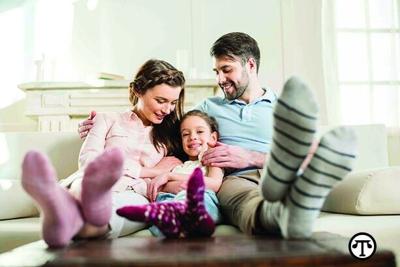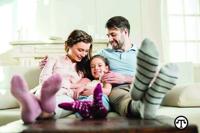(NAPSI)—When buying furniture, if you’re like most consumers, you look for style and comfort, but it’s important to consider safety, too. Here are tips to help:
Check dates/secure furniture. Check the manufacture date on the back of furniture used to store clothing, including dressers or chests. Beginning in September 2023, those pieces had to meet a strict new stability standard.
Store heavier items down low so taller pieces are not top-heavy. Don’t put toys or treats on top of furniture where kids can see but not reach them, which might tempt them to climb.
New or old, if it has shelves, doors or drawers, you need to anchor it to the wall. Manufacturers include free anchors, or you can buy anchors. See www.AnchorIt.gov for advice.
Wall-mount or secure TVs on a sturdy base. For flat screen TVs, the safest strategy is wall-mounting according to manufacturer instructions.
If you cannot wall-mount your TV, choose a low, sturdy cabinet and secure the TV to the wall or to the furniture with a TV anchor. Never place TVs on furniture not built to hold electronics.
Buy upholstered furniture made with certified foam. For example, CertiPUR-US® has certified the polyurethane foam used in mattresses for more than 17 years and certifies the foam used in upholstered furniture.
If you choose upholstered furniture made with CertiPUR-US certified foam you will know the foam has been screened for chemicals that can harm human health or contribute to poor indoor air quality.
If shopping for mattresses, pillows, sofas, upholstered chairs and recliners, youth furniture and play cushions or pet beds, you can check their directory at CertiPUR.US. Better yet, consult the CertiPUR-US mobile app while shopping.
Monitor your children around recliners and lift chairs. Don’t let kids play on recliners or fiddle with the buttons or remotes. Return recliners to the upright and closed position when not in use. Know the whereabouts of small children and pets before closing a recliner or lowering a lift chair.
Follow bunk bed safety precautions. Children under 6 should never use the top bunk. Even older kids should be reminded not to jump from or play on the top bunk. Discourage horseplay and make sure the bunk’s ladder or stair is securely fastened.
Bunk beds must have railings on both sides of the top bunk that extend 5 inches or more above the mattress. Decorative finials or extensions of bed posts on the top bunk are not allowed under safety standards, because they can be a strangulation hazard.
Be aware of glass tabletop risks. Don’t let children play on or around glass-top tables and never, ever stand on a glass-top table.
Make sure glass tabletops in your home are made from tempered glass, which is less likely to break. To find out if a glass tabletop in your home is tempered, check the edge or a corner. Most manufacturers mark tempered glass with the word “tempered” or a “T” or stamp it with the code for the glass safety standard, which is ASTM F2813-18.
Use caution buying used furniture. Second-hand furniture is great if you’re on a budget.
If it was produced before 1978, however, the finish in painted furniture could contain dangerous levels of lead. If you have children, you should avoid old, painted furniture altogether.
Crib safety standards change frequently, so it’s best to avoid used cribs. If you inherit or buy an old cedar chest, remove the latching mechanism so no one can be trapped inside.
No matter what type of secondhand furniture you’re considering, it’s a good idea to check for recalls at SaferProducts.gov.
Find more tips at SaferHome.Info.
Word Count: 587











